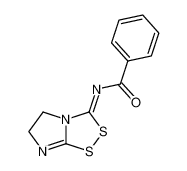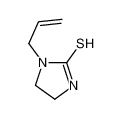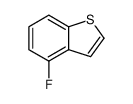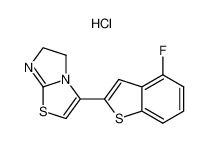| Product name | 2-Imidazolidinethione |
|---|
| Product number | - |
|---|---|
| Other names | 2-Imidazolidinethione |
| Identified uses | For industry use only. Ethylene thiourea is used as an accelerator in synthetic rubber production and as a curing agent for epichlorohydrin elastomers. Ethylene thiourea is also a component of ethylenebisdithiocarbamate fungicides. |
|---|---|
| Uses advised against | no data available |
| Company | MOLBASE (Shanghai) Biotechnology Co., Ltd. |
|---|---|
| Address | Floor 4 & 5, Building 12, No. 1001 North Qinzhou Road, Xuhui District, Shanghai, China |
| Telephone | +86(21)64956998 |
| Fax | +86(21)54365166 |
| Emergency phone number | +86-400-6021-666 |
|---|---|
| Service hours | Monday to Friday, 9am-5pm (Standard time zone: UTC/GMT +8 hours). |
Acute toxicity - Oral, Category 4
Reproductive toxicity, Category 1B
2.2 GHS label elements, including precautionary statements| Pictogram(s) |   |
|---|---|
| Signal word | Danger |
| Hazard statement(s) | H302 Harmful if swallowed |
| Precautionary statement(s) | |
| Prevention | P264 Wash ... thoroughly after handling. P270 Do not eat, drink or smoke when using this product. P201 Obtain special instructions before use. P202 Do not handle until all safety precautions have been read and understood. P280 Wear protective gloves/protective clothing/eye protection/face protection. |
| Response | P301+P312 IF SWALLOWED: Call a POISON CENTER/doctor/…if you feel unwell. P330 Rinse mouth. P308+P313 IF exposed or concerned: Get medical advice/ attention. |
| Storage | P405 Store locked up. |
| Disposal | P501 Dispose of contents/container to ... |
none
3.Composition/information on ingredients 3.1 Substances| Chemical name | Common names and synonyms | CAS number | EC number | Concentration |
|---|---|---|---|---|
| 2-Imidazolidinethione | 2-Imidazolidinethione | 96-45-7 | none | 100% |
Consult a physician. Show this safety data sheet to the doctor in attendance.
If inhaledFresh air.
In case of skin contactRinse skin with plenty of water or shower.
In case of eye contactRinse with plenty of water (remove contact lenses if easily possible).
If swallowedRinse mouth. Seek medical attention if you feel unwell.
4.2 Most important symptoms/effects, acute and delayedExposure Routes: inhalation, ingestion, skin and/or eye contact Symptoms: Irritation eyes Target Organs: Eyes, skin, thyroid, reproductive system (NIOSH, 2016)
4.3 Indication of immediate medical attention and special treatment needed, if necessary/SRP:/ Immediate first aid: Ensure that adequate decontamination has been carried out. If patient is not breathing, start artificial respiration, preferably with a demand valve resuscitator, bag-valve-mask device, or pocket mask, as trained. Perform CPR if necessary. Immediately flush contaminated eyes with gently flowing water. Do not induce vomiting. If vomiting occurs, lean patient forward or place on the left side (head-down position, if possible) to maintain an open airway and prevent aspiration. Keep patient quiet and maintain normal body temperature. Obtain medical attention. /Poisons A and B/
5.Fire-fighting measures 5.1 Extinguishing media Suitable extinguishing mediaUse dry chemical, carbon dioxide, water spray, or foam extinguishers ... If material or contaminated runoff enters waterways, notify downstream users of potentially contaminated waters. Notify local health and fire officials and pollution control agencies. From a secure, explosion-proof location, use water spray to cool exposed containers. If cooling streams are ineffective (venting sound increases in volume and pitch, tank discolors or shows any signs of deforming), withdraw immediately to a secure position.
5.2 Specific hazards arising from the chemicalThis chemical is combustible.
5.3 Special protective actions for fire-fightersWear self-contained breathing apparatus for firefighting if necessary.
6.Accidental release measures 6.1 Personal precautions, protective equipment and emergency proceduresUse personal protective equipment. Avoid dust formation. Avoid breathing vapours, mist or gas. Ensure adequate ventilation. Evacuate personnel to safe areas. Avoid breathing dust. For personal protection see section 8.
6.2 Environmental precautionsPersonal protection: particulate filter respirator adapted to the airborne concentration of the substance. Do NOT let this chemical enter the environment. Sweep spilled substance into covered sealable containers. If appropriate, moisten first to prevent dusting. Carefully collect remainder. Then store and dispose of according to local regulations.
6.3 Methods and materials for containment and cleaning upSRP: Wastewater from contaminant suppression, cleaning of protective clothing/equipment, or contaminated sites should be contained and evaluated for subject chemical or decomposition product concentrations. Concentrations shall be lower than applicable environmental discharge or disposal criteria. Alternatively, pretreatment and/or discharge to a permitted wastewater treatment facility is acceptable only after review by the governing authority and assurance that "pass through" violations will not occur. Due consideration shall be given to remediation worker exposure (inhalation, dermal and ingestion) as well as fate during treatment, transfer and disposal. If it is not practicable to manage the chemical in this fashion, it must be evaluated in accordance with EPA 40 CFR Part 261, specifically Subpart B, in order to determine the appropriate local, state and federal requirements for disposal.
7.Handling and storage 7.1 Precautions for safe handlingAvoid contact with skin and eyes. Avoid formation of dust and aerosols. Avoid exposure - obtain special instructions before use.Provide appropriate exhaust ventilation at places where dust is formed. For precautions see section 2.2.
7.2 Conditions for safe storage, including any incompatibilitiesSeparated from strong oxidants. Store in an area without drain or sewer access.Store in tightly closed containers in a cool, well ventilated area away from strong oxidizers, acids, acid anhydrides, acrolein. Store in a refrigerator or a cool, dry place. A regulated marked area should be established where this chemical is handled, used, or stored ...
8.Exposure controls/personal protection 8.1 Control parameters Occupational Exposure limit valuesNIOSH considers ethylene thiourea to be a potential occupational carcinogen.
NIOSH usually recommends that occupational exposures to carcinogens be limited to the lowest feasible concentration.
Use encapsulated form.
Biological limit valuesno data available
8.2 Appropriate engineering controlsHandle in accordance with good industrial hygiene and safety practice. Wash hands before breaks and at the end of workday.
8.3 Individual protection measures, such as personal protective equipment (PPE) Eye/face protectionSafety glasses with side-shields conforming to EN166. Use equipment for eye protection tested and approved under appropriate government standards such as NIOSH (US) or EN 166(EU).
Skin protectionWear impervious clothing. The type of protective equipment must be selected according to the concentration and amount of the dangerous substance at the specific workplace. Handle with gloves. Gloves must be inspected prior to use. Use proper glove removal technique(without touching glove's outer surface) to avoid skin contact with this product. Dispose of contaminated gloves after use in accordance with applicable laws and good laboratory practices. Wash and dry hands. The selected protective gloves have to satisfy the specifications of EU Directive 89/686/EEC and the standard EN 374 derived from it.
Respiratory protectionWear dust mask when handling large quantities.
Thermal hazardsno data available
9.Physical and chemical properties| Physical state | White to pale green crystalline powder |
|---|---|
| Colour | Needles, prisms from alcohol or amyl alcohol |
| Odour | Faint, amine odor |
| Melting point/ freezing point | 15°C(lit.) |
| Boiling point or initial boiling point and boiling range | 275°C(lit.) |
| Flammability | Combustible SolidCombustible. Gives off irritating or toxic fumes (or gases) in a fire. |
| Lower and upper explosion limit / flammability limit | no data available |
| Flash point | 61°C(lit.) |
| Auto-ignition temperature | no data available |
| Decomposition temperature | no data available |
| pH | no data available |
| Kinematic viscosity | no data available |
| Solubility | In water:19 g/L (20 ºC) |
| Partition coefficient n-octanol/water (log value) | log Kow = -0.66 |
| Vapour pressure | less than 1 mm Hg at 20°C |
| Density and/or relative density | 1.41~1.45 |
| Relative vapour density | no data available |
| Particle characteristics | no data available |
no data available
10.2 Chemical stabilityStable under recommended storage conditions.
10.3 Possibility of hazardous reactionsDust explosion possible if in powder or granular form, mixed with air.ETHYLENE THIOUREA may be sensitive to prolonged exposure to light. Incompatible with acids, diazo and azo compounds, halocarbons, isocyanates, aldehydes, alkali metals, nitrides, hydrides, and other strong reducing agents. Reactions with these materials generate heat and in many cases hydrogen gas. May react with acids to liberate hydrogen sulfide.
10.4 Conditions to avoidno data available
10.5 Incompatible materialsStrong oxidizers, acids, acid anhydrides, acrolein.
10.6 Hazardous decomposition productsWhen heated to decomposition it emits very toxic fumes of /nitroxides/ and /sulfoxides/.
11.Toxicological information Acute toxicity- Oral: LD50 Rat oral 545 mg/kg bw
- Inhalation: no data available
- Dermal: no data available
no data available
Serious eye damage/irritationno data available
Respiratory or skin sensitizationno data available
Germ cell mutagenicityno data available
CarcinogenicityCancer Classification: Group B2 Probable Human Carcinogen
Reproductive toxicityIn an occupational study, reproductive or developmental effects were not observed in humans. Ethylene thiourea has been shown to be a potent teratogen in rats orally or dermally exposed, causing CNS and skeletal abnormalities.
STOT-single exposureno data available
STOT-repeated exposureno data available
Aspiration hazardno data available
12.Ecological information 12.1 Toxicity- Toxicity to fish: EC50; Species: Oncorhynchus mykiss (Rainbow trout, fertilized egg- early fry stage); Conditions: freshwater, renewal, 10°C, pH 7.7, hardness 50 mg/L CaCO3; Concentration: 1000000 ug/L for 60 days (95% confidence interval: 600000-3200000 ug/L); Effect: morphological abnormalities /> or =99% purity
- Toxicity to daphnia and other aquatic invertebrates: LC50; Species: Daphnia magna (Water flea); Conditions: freshwater, renewal; Concentration: 26400 ug/L for 48 hr (95% confidence interval: 21600-32200 ug/L) /99% purity
- Toxicity to algae: no data available
- Toxicity to microorganisms: no data available
AEROBIC: Ethylene thiourea was found to be readily degraded by soil microorganisms(1). Ethylene thiourea degraded rapidly in soil to ethyleneurea and then CO2; however, studies with autoclaved soil indicated that initial conversion was accomplished chemically(2) while further degradation to CO2 was accomplished microbially(3). Ethylene thiourea was shown to be biodegradable in aerobic soil samples from a sandy locality in western Jylland, Denmark at a concentration 125 ug/L incubated in the dark at 23°C for 120 days(4). Aerobic decay rates were 11.4 to 13.3 ug/kg soil-day(4). Degradation of 0.07 mg/kg 14C-labeled ethylene thiourea was determined in surface (19% in 24 hrs) coarse sandy field soil from Denmark(5). Subsurface rates were affected by soil depth; 16% and 23% at 100 and 60 cm depth, respectively, after 109 days. Following a 5 day incubation of 0.05 mg/L ethylene thiourea in activated sludge, 2.9% of applied amount was degraded(5). Ethylene thiourea, present at 100 mg/L, reached 0% of its theoretical BOD in 4 weeks using an activated sludge inoculum at 30 mg/L and the Japanese MITI test(6).
12.3 Bioaccumulative potentialBCFs of <0.2 to 0.3 and <1.8 were determined in carp (Cyprinus carpio) for ethylene thiourea at concentrations of 1.0 and 0.1 ppm exposed for 6 weeks(1). According to a classification scheme(2), these BCFs suggest bioconcentration in aquatic organisms is low(SRC).
12.4 Mobility in soilUsing a structure estimation method based on molecular connectivity indices(1), the Koc of ethylene thiourea can be estimated to be 13(SRC). According to a classification scheme(2), this estimated Koc value suggests that ethylene thiourea is expected to have very high mobility in soil. Average Rf values of 0.96 (Norfolk sandy loam), 1.00 (Lakeland sandy loam), 0.96 (Hagerstown silty clay loam), 0.83 (Barnes clay loam) and 0.61 (Celeryville muck) were measured using soil TLC plates which is indicative of high mobility in all the soils except the muck which has intermediate mobility(3). Ethylene thiourea Kd values were measured in Dutch soils from Fladerne Baek, March 1994; 0.06 (2.1% clay, 1.4% silt, 96.3% sand, 0.1% humus, pH 6.4), 0.13 (2.5% clay, 1.4% silt, 95.7% sand, 0.3% humus, pH 6.3), 0.17 (3.6% clay, 2.8% silt, 90.8% sand, 2.8% humus, pH 6.9)(4).
12.5 Other adverse effectsno data available
13.Disposal considerations 13.1 Disposal methods ProductThe material can be disposed of by removal to a licensed chemical destruction plant or by controlled incineration with flue gas scrubbing. Do not contaminate water, foodstuffs, feed or seed by storage or disposal. Do not discharge to sewer systems.
Contaminated packagingContainers can be triply rinsed (or equivalent) and offered for recycling or reconditioning. Alternatively, the packaging can be punctured to make it unusable for other purposes and then be disposed of in a sanitary landfill. Controlled incineration with flue gas scrubbing is possible for combustible packaging materials.
14.Transport information 14.1 UN Number| ADR/RID: UN1325 | IMDG: UN1325 | IATA: UN1325 |
| ADR/RID: FLAMMABLE SOLID, ORGANIC, N.O.S. |
| IMDG: FLAMMABLE SOLID, ORGANIC, N.O.S. |
| IATA: FLAMMABLE SOLID, ORGANIC, N.O.S. |
| ADR/RID: 4.1 | IMDG: 4.1 | IATA: 4.1 |
| ADR/RID: III | IMDG: III | IATA: III |
| ADR/RID: no | IMDG: no | IATA: no |
no data available
14.7 Transport in bulk according to Annex II of MARPOL 73/78 and the IBC Codeno data available
15.Regulatory information 15.1 Safety, health and environmental regulations specific for the product in question| Chemical name | Common names and synonyms | CAS number | EC number |
|---|---|---|---|
| 2-Imidazolidinethione | 2-Imidazolidinethione | 96-45-7 | none |
| European Inventory of Existing Commercial Chemical Substances (EINECS) | Listed. | ||
| EC Inventory | Listed. | ||
| United States Toxic Substances Control Act (TSCA) Inventory | Listed. | ||
| China Catalog of Hazardous chemicals 2015 | Not Listed. | ||
| New Zealand Inventory of Chemicals (NZIoC) | Listed. | ||
| Philippines Inventory of Chemicals and Chemical Substances (PICCS) | Listed. | ||
| Vietnam National Chemical Inventory | Listed. | ||
| Chinese Chemical Inventory of Existing Chemical Substances (China IECSC) | Listed. | ||
| Creation Date | Aug 12, 2017 |
|---|---|
| Revision Date | Aug 12, 2017 |
- CAS: Chemical Abstracts Service
- ADR: European Agreement concerning the International Carriage of Dangerous Goods by Road
- RID: Regulation concerning the International Carriage of Dangerous Goods by Rail
- IMDG: International Maritime Dangerous Goods
- IATA: International Air Transportation Association
- TWA: Time Weighted Average
- STEL: Short term exposure limit
- LC50: Lethal Concentration 50%
- LD50: Lethal Dose 50%
- EC50: Effective Concentration 50%
- IPCS - The International Chemical Safety Cards (ICSC), website: http://www.ilo.org/dyn/icsc/showcard.home
- HSDB - Hazardous Substances Data Bank, website: https://toxnet.nlm.nih.gov/newtoxnet/hsdb.htm
- IARC - International Agency for Research on Cancer, website: http://www.iarc.fr/
- eChemPortal - The Global Portal to Information on Chemical Substances by OECD, website: http://www.echemportal.org/echemportal/index?pageID=0&request_locale=en
- CAMEO Chemicals, website: http://cameochemicals.noaa.gov/search/simple
- ChemIDplus, website: http://chem.sis.nlm.nih.gov/chemidplus/chemidlite.jsp
- ERG - Emergency Response Guidebook by U.S. Department of Transportation, website: http://www.phmsa.dot.gov/hazmat/library/erg
- Germany GESTIS-database on hazard substance, website: http://www.dguv.de/ifa/gestis/gestis-stoffdatenbank/index-2.jsp
- ECHA - European Chemicals Agency, website: https://echa.europa.eu/

































